Animal movement technologies have already significantly advanced our understanding of the natural world, from uncovering previously mysterious migration patterns and key movement corridors to demonstrating the impacts of anthropogenic pressures and climate change. Continuing advances in the development of technologies for collecting and transmitting bio-logging data, combined with the increased availability of high-resolution environmental data and analytical developments in movement modelling, are opening doors to novel applications. However, there are still major gaps in the space, including mobilizing movement data to translate data from tracking devices into insights for application in policy and practice. This group is a place for the animal movement community to connect and discuss our efforts to advance the field.
Resources for beginners
Learn about WILDLABS Animal Movement research projects
- MoveBON Initiative Announcement
- MoveBON Follow-Up Discussion
- Virtual Meetup Season 4: Tracking Progress (A WILDLABS research project on movement ecology)
Group curators
- @TaliaSpeaker
- | She/her
WILDLABS & World Wide Fund for Nature/ World Wildlife Fund (WWF)
I'm the Executive Manager of WILDLABS at WWF



- 23 Resources
- 64 Discussions
- 31 Groups
- @lhughey
- | she/her
Smithsonian Conservation Biology Institute
I am an ecologist and program manager with experience leading collaborative research projects in international settings. I specialize in the application of animal tracking data to conserve migratory species on a changing planet.



- 6 Resources
- 10 Discussions
- 3 Groups
No showcases have been added to this group yet.
Max Planck Institute of Animal Behavior
Project leader of MoveApps | Movement ecology

- 1 Resources
- 5 Discussions
- 5 Groups
La Trobe University
Zoologist & Conservation biologist
- 0 Resources
- 1 Discussions
- 5 Groups
Spatial ecologist focused on landscape ecology and spatial modeling of biodiversity

- 0 Resources
- 0 Discussions
- 4 Groups
- @Britneecheney
- | her/she
My name is Britnee Cheney. I am a keeper and trainer for three North American River Otters at an aquarium in Utah. I have recently started a conservation program for this species in the wild and am looking for resources and mentors to help me with my camera trapping.


- 0 Resources
- 13 Discussions
- 7 Groups
- @Robincrocs
- | He/Him//El//Ele
Wildlife biologist, works with Caimans and Crocodiles
- 0 Resources
- 0 Discussions
- 15 Groups
PhD student at the University of Wuerzburg, working on the influence of climate change on animal migration, especially the Northern Bald Ibis.
- 1 Resources
- 0 Discussions
- 6 Groups
- @StephODonnell
- | She / Her
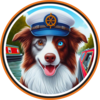


- 196 Resources
- 676 Discussions
- 31 Groups
- @Rob_Appleby
- | He/him
Wild Spy
Whilst I love everything about WILDLABS and the conservation tech community I am mostly here for the badges!!




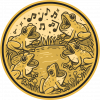
- 1 Resources
- 315 Discussions
- 11 Groups
Hello, I am a PhD student studying birds and box turtles!
- 0 Resources
- 0 Discussions
- 8 Groups
Deeply intrigued by AI, I navigate its limitless potential with a commitment to making a positive impact.
- 0 Resources
- 0 Discussions
- 1 Groups
- @daviana
- | she/her
PhD student at Stanford University studying marine migratory species and human-wildlife interactions through biologging, remote sensing, and participatory science.
- 0 Resources
- 0 Discussions
- 3 Groups
- @eliminatha
- | she
Passionate wildlife researcher dedicated to uncovering the secrets of the natural world via the lens of camera traps. With a sharp eye for detail and a strong commitment to wildlife conservation.
- 3 Resources
- 0 Discussions
- 5 Groups
Un ambicioso proyecto internacional está usando transmisores satelitales para monitorear los viajes migratorios de ballenas francas australes, permitiendo entender sus sorprendentes patrones de desplazamiento en tiempo...
7 August 2025
If you're a Post-Doctoral Fellow, a PhD student, or a member of the research staff interested in applying your computational skills to support active research publications, please read on to learn about the Cross-...
5 August 2025
Each quarter, Holohil will be supporting projects by donating up to CAD$2,500.00 toward the purchase of Holohil transmitters. We will also pay all shipping charges (Note: importation duties and taxes are the receiver’s...
4 August 2025
The Marine Innovation Lab for Leading-edge Oceanography develops hardware and software to expand the ocean observing network and for the sustainable management of natural resources. For Fall 2026, we are actively...
24 July 2025
Link
Firetail now features a fresh account over at Bluesky - follow us for updates on animal tracking, bio-logging and, of course, upcoming releases and features!
26 June 2025
Hi together, I am working on detecting causalities between land surface dynamics and animal movement by using satellite-based earth observation data. As this is might be your expertise I kindly ask for your support...
8 May 2025
A Post-Doc position is available to join the team coordinating the Urban Exploration Project – a collaborative initiative in partnership between the University of St. Andrews and the National Geographic Society.
2 May 2025
The Convention on the Conservation of Migratory Species (CMS) is seeking information on existing databases relevant for animal movement. If you know of a database that should be included, please complete the survey to...
30 April 2025
We are hiring for a customer support / marketing specialist.
20 February 2025
We look for a person with programming skills in R and/or Python.
4 February 2025
Are you interested in developing new 3D motion capture techniques to for measuring super fast wildlife like cheetahs? Are you interested in working with fusing exciting technologies such as event cameras, audio and...
3 February 2025
This leads to an exciting blog we did recently, it also includes a spatial map indicating elephant movement tracks of an orphaned elephant who self released himself into the wild (Kafue National Park). Cartography was...
28 January 2025
August 2025
event
September 2025
event
event
October 2025
event
November 2025
event
September 2024
event
August 2024
100 Products
Recently updated products
| Description | Activity | Replies | Groups | Updated |
|---|---|---|---|---|
| Thanks Adrien, I have reached out to Rob |
|
Animal Movement | 9 hours 11 minutes ago | |
| Hi thereI am working with a small dendrobatid amphibian population living in tree tops in Panama, less than 30 mm SVL, and I want to... |
|
Animal Movement | 2 days 4 hours ago | |
| 🐝 Apis Nomadica Labs: Mapping Royal Jelly Terroir Through Mobile Bee BiotechAbout Us:Apis Nomadica Labs is a mobile apiary research... |
|
Acoustics, Conservation Tech Training and Education, Animal Movement, Human-Wildlife Coexistence | 1 week 1 day ago | |
| You could just throw out that data, but I think you'd be doing yourself a disservice and missing out on some interesting insights. Are you training the AI with just pre-COVID... |
|
AI for Conservation, Animal Movement, Data management and processing tools, Human-Wildlife Coexistence | 1 week 6 days ago | |
| Wonderful video! Really impressive :) |
|
Animal Movement, Human-Wildlife Coexistence, Latin America Community | 6 months 1 week ago | |
| Thank you. A couple of things I've done in getting a completely different GPS logging system running.I do use a local clock to keep local time when the GPS is off. ... |
|
Animal Movement | 2 weeks 4 days ago | |
| Thanks @Adrien_Pajot, we are! Also buoys! |
|
Acoustics, Animal Movement | 1 month 1 week ago | |
| I create ocean exploration and marine life content on YouTube, whether it be recording nautilus on BRUVs, swimming with endangered bowmouth... |
|
Acoustics, AI for Conservation, Animal Movement, Camera Traps, Citizen Science, Drones, Emerging Tech, Marine Conservation, Sensors, Sustainable Fishing Challenges, Wildlife Crime | 1 month 2 weeks ago | |
| Hi Craig, I have had the chance to look more closely into your TagRanger product and the information that is available also here on WildLabs. I would definitely be interested... |
+10
|
Animal Movement | 1 month 2 weeks ago | |
| Thank you for your reply, ChadI meant 10 as a whole, indeed. Perhaps you see your post in one group, but since it is tagged for all groups, I assumed you meant 10 in total.In your... |
|
Acoustics, AI for Conservation, Animal Movement, Camera Traps, Citizen Science, Climate Change, Community Base, Connectivity, Drones, eDNA & Genomics, Emerging Tech, Funding and Finance, Geospatial, Human-Wildlife Coexistence, Software Development, Wildlife Crime | 1 month 3 weeks ago | |
| Thanks Fadhilla! I met with your colleague Henrick at the booth. :-) |
|
AI for Conservation, Animal Movement, Camera Traps, Citizen Science, Community Base, Data management and processing tools, Early Career, Geospatial | 1 month 3 weeks ago | |
| Hi everyone,I am working in a national park where a local NGO is soon to be setting up a LoRaWan gateway mainly for monitoring animal... |
|
Animal Movement | 2 months 1 week ago |
movedesign: a tool to evaluate sampling design in biologging
12 June 2023 11:25pm
Wildlife tracking collar powers itself as animals roam
12 June 2023 8:27am
WILDLABS Conservation Tech Intern (The Inventory)
6 June 2023 10:43am
GPS collars are helping save Sumatra’s last wild elephants
28 May 2023 6:20pm
Filter Last X Positions
23 May 2023 4:41pm
Animal tracking stories
22 May 2023 2:19am
Email Alerts via Moveapps
12 May 2023 2:33pm
ICCB 2023 WILDLABS Workshop: Bridging Sectors for Movement Ecology Innovation
9 May 2023 8:37pm
Collar Tracking vs. Camera Traps for Monitoring Mexican Wolves
5 May 2023 9:08pm
GPS collaring study of Ethiopian wolves
5 May 2023 12:55am
Feathered forecast: Tech tools comb weather data for bird migrations
26 April 2023 2:50pm
Video: Virginia Tech tracking bobcats to preserve wildlife
26 April 2023 2:45pm
Better Vectronic Live Feed to Movebank
24 April 2023 9:01pm
Real-time Animal Location Data Sources?
30 March 2023 4:32am
21 April 2023 6:08pm
In addition to those noted, you can try the Animal Telemetry Network
Animal Telemetry Network - The U.S. Integrated Ocean Observing System (IOOS)
The Animal Telemetry Network works to help facilitate the collection, management, and availability of marine animal telemetry data.
21 April 2023 8:32pm
Thank you Thomas, I'll take a look.
Catch up with The Variety Hour: April 2023
21 April 2023 10:42am
Margo Luminous Update: Next Phase BETA Release
31 March 2023 8:55pm
12 April 2023 10:57pm
Spring is our busiest time of year and we are also in the middle of an expansion currently so they may not be able to respond. Will ask when they are prepping for variety hour.
13 April 2023 5:11pm
Hi Lars,
I can chime in to answer some of your questions.
1. The web portal is here. This is only a basic placeholder while we work on a better system with login security and 2 way comms.
https://margosupplies.com/us-en/luminous/
Send me a PM to see one our test Elk in Jackson, Wyoming.
2. Our data is always transmitted sequentially, oldest samples first.
3. Currently our staff must do any remote reprogramming, just send us an email. This feature will be part of the new web portal.
4. Iridium allows up to 340 bytes per SBD transmission. Each sample is 17 bytes so we can fit 20 samples per transmission. With good signal we can clear out a backlog of data almost immediately.
5. Currently no geofencing or alerts but that is on the road map.
6. As Brett stated.
7. As Brett stated we are not going to support traditional VHF since this has caused many problems with poachers and wildlife photographers finding the animals. We are developing our own 900MHz LoRa based system which will securely transmit the devices location.This will be released in the form of a USB doggle with antenna that can be plugged into an Android device.
In regard to your questions about accelerometer and Doppler shift.
We have an onboard accelerometer sampling at 50Hz and currently this information is fed into a human calibrated pedometer algorithm. Currently it gives us a rough indicator of how busy the animal is. This sensor could be repurposed based on customer needs.
Every time an iridium device transmits information, the receiving satellite records a rough position based on doppler effect from the signal. This gives you a backup geo-location with accuracy in the kilometer range. If you use the above tool and click download CSV you can see this information.
Happy to answer any more questions.
14 April 2023 8:38am
Hi Jackson @MargoJack!
Thanks a lot for answering these questions.
Looks like you have a very interesting product!
Interesting point you raise with VHF beeing intercepted by poachers etc.
Would there be sufficient memory to log accelerometer data at something like 8Hz on-board the collar for later inference of behaviours?
Will you make versions for other LoRa frequency regions?
Cheers,
Lars
Field testing of a radio telemetry system to be deployed in the sea.
24 January 2023 6:52am
21 March 2023 2:47am
Here's a link about waterproofing in the marine environment, if you haven't already discovered Ed Mallon.
21 March 2023 8:52am
Oh, great link! Been doing marine projects recently and a big headache is protecting submerged electronics. I've kind of heard of many of those techniques, but great to see them collected all in one place and with first hand experienced commentary regarding them.
12 April 2023 2:32pm
Not sure exactly how your telemetry will be deployed, but if it's going to be attached to an animal in a relatively non-invasive way, you might check with zoos or aquariums that have similar species.
I worked in that industry for a long time and we tested telemetry for seals, sea lions, polar bears and elephants. There might have been more, but that's all I can think of off the top of my head. This can help improve attachment methods and test how tough the animals will be on the equipment.
Wing-tags with trackers attached?
3 March 2023 1:47am
19 March 2023 5:58am
Thanks Thomas!
I haven't found any wing-tag avian trackers like I described. Although, similar models have been made for terrestrial animals in the form of ear tags.
LiteTrack 20 GPS Ear Tag | Lotek
GPS-RF Ear Tag for ungulates. As the smallest GPS ear tag in our LiteTrack family, The Lotek LiteTrack 20 Eartag provides a GPS option for ...
404 Redirect | Advanced Telemetry Systems
" /> <meta name=
I am inquiring as to whether a lighter version can be made for birds. Although an obvious concern is the weight of the tracker since the wellbeing of the bird is our priority.
29 March 2023 1:20pm
4 April 2023 2:08am
Thanks Thomas, will do!
Proxies of light incidence/luminosity from camera traps
27 March 2023 8:04pm
Passive RECCO reflectors - harmonic radar
25 March 2023 9:07pm
Monitoring airborne biomass
14 March 2023 10:30am
14 March 2023 1:34pm
Looks like you want to have a read of this thread:
20 March 2023 2:44pm
Our project in very short is, setting up a sensor network for monitoring airborne biomass, mainly insects, birds and bats in near realtime, and to develop a forecast model to be used for mitigation with respect various types of human-wildlife conflicts (e.g. wind power, pesticide application, aviation). Our expertise is mainly in radar monitoring, but we aim on add insect camera information to be merged with the quantitative biomass measeurments by radar.
Monique - the space Elk(s)
20 March 2023 2:25pm
Proposals wanted for Innovation in Practice
6 March 2023 10:34pm
Moveapps: EMAC23 Coding Challenge
3 March 2023 7:58am
3 March 2023 3:12pm
Super initiative! I hope you get a lot of entries to this coding challenge!
6 March 2023 7:53am
Thanks Lars! Look forward to any entries from you and your colleagues. If you have an questions or suggestions, let me know.
6 March 2023 1:11pm
Hi Andrea! Although I am a keen user and observer of the Moveapps initiative, my R or Python coding skills are next to non- existing. I am therefore not likely to be contributing this time... Some day perhaps ;)
The WILDLABS Variety Hour: February 2023 - YouTube
3 March 2023 11:24am
Moveapps EMAC23 Coding Challenge – Participate now!
3 March 2023 7:45am
Tiny trackers for fish - other applications?
22 February 2023 9:48pm
24 February 2023 3:40pm
These are really small acoustic tags. (Lotek Wireless, Sonotronics, and the JSATs design are examples of similar manufacturers/products.) These tags will only work in water because they require water in order to propagate their signal. Of course that means you need receivers in order to pick up the signal, so usually organizations will have a string or strings of strategically placed receivers to pick up the acoustic tags (mouths of rivers is a common location). I think the Ocean Tracking Network (OTN) operates some of the largest sets of receivers. Others are managed by the institution themselves, various regional IOOS offices, and/or similar.
They could work on really small sea turtles, but you are limited to tracking them based on the range of the receivers (which for smaller tags is even more limited, measured in meters or hundreds of meters). Lotek Wireless recently started producing their "Sunbird" line which has been used on some relatively small turtles. You can look at the work that Upwell is doing as an example of satellite-based tracking with very small turtles.
Birds...out of the question : (
Download Now: A Best Practice Guide to Satellite Technologies for Tracking Wildlife
 WILDLABS Team
and 1 more
WILDLABS Team
and 1 more
17 February 2023 10:29am
17 February 2023 11:34am
20 February 2023 9:34am
Operation Pangolin launches to save world's most trafficked wild mammal
16 February 2023 7:51pm
17 February 2023 1:50am
pseudoranges
31 January 2023 9:10pm
1 February 2023 6:26pm
Although it is not explicitly stated anywhere, I believe SnapperGPS uses similar "pseudorange" methods.
SnapperGPS - Home
Home page of SnapperGPS - A small, low-cost, low-power wildlife tracking system.
2 February 2023 3:24am
Thank you very much for finding these materials. I also tried to find similar techniques using pseudorange positioning a few months ago, but unfortunately I did not find so many papers and such creative works at that time. Your materials seemed to open it up for me. most sincere thanks!
16 February 2023 9:35am





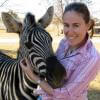


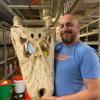













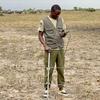






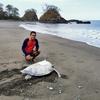

























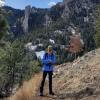






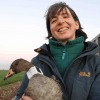


6 April 2023 4:18pm
Thanks for the link, Amanda. That Shark page looks great. Very good point on temporal resolution and the burden of overhead of sending data in real-time, I hadn't really considered that.